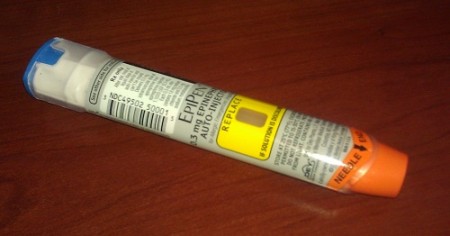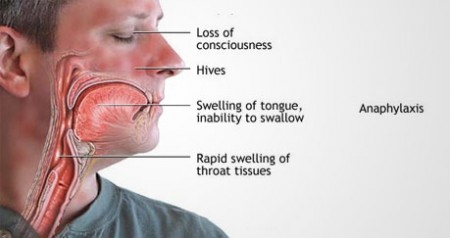June 24, 2015 – When I was a child I didn’t know anyone with a peanut allergy. At school peanut butter and jam sandwiches were standard fare for lunches. But something happened over the 60 years since my kindergarten days. Some believe preservatives added during food processing have created peanut and other food allergies. Others blame the industrial processes used in creating food products. Some say antibiotics, pesticides, herbicides and other modern miracles have created the conditions for peanut allergy to become epidemic. And others even argue that our over-reliance on hygiene, our clean freak mentality, has isolated children from dirt, weakening our natural immune system, and therefore increasing sensitivity to plants and foods.
Those are the hypotheses. But what we do know is peanut allergy is on the increase impacting 7 in 10,000 children, and food allergy overall is affecting 1 in 13 in North America today. In the U.S. 150 to 200 die each year from an allergic response to peanuts. Emergency rooms treat 125,000 annually. As a result more children and young adults are walking around with asthma inhalers and EpiPens (see image below). Anaphylaxis. a severe allergic response, is being seen in hospitals more and more.
Having experienced anaphylaxis (see symptoms in image below) three times in my life, once when I was stung by a hornet and the other two from ingesting mango, the second time unwittingly, I have had to carry both inhalers and EpiPen. Although I appear to have outgrown my sting allergy, mango remains a trigger. Today I avoid it and when eating out always alert restaurants about the allergy.
From personal experience I am acutely aware of how parents must feel when they first learn a child has a life-threatening food allergy or has experienced a reaction. Inhalers and EpiPens are their band-aids but they are not a cure. That’s why news that two companies, currently in advanced clinical trial, may have found breakthrough biomedical solutions to peanut allergy is making headlines.
The companies, DBV Technologies, French, and Aimmune Therapeutics, American, are both close to getting approval from regulatory agencies.
- DBV’s product is Viaskin. It is a desensitizer delivered through a skin patch worn daily. The skin patch minimizes the risk of a negative systemic reaction. Treatment lasts for 12-months. Patch wearers have experienced a 10-fold increase in tolerance when exposed to increasing amounts of peanut protein. In latest clinical trials almost 54% of children have responded well with adolescents showing improvement in almost 39%.
- Aimmune’s product, AR101, is about to start a phase-3 trial and designated fast-track by the U.S. Food and Drug Administration. It is also a desensitizer that uses a measured dose, from 0.5 to 300 milligrams, containing peanut protein and “well-defined concentrations of peanut allergens.” Treatment occurs over 20 weeks with dosing every two weeks on an out patient basis. After 20 weeks patients take a daily maintenance dose of 300 milligrams. On their website Aimmune states AR101 desensitizes exposure to peanut protein equivalent to 3 to 4 peanuts. That is enough to protect those with the allergy from having severe reactions although the company recommends peanut allergy sufferers still carry an EpiPen as a precaution.
But there may be an even better solution in the future that doesn’t involve having to take a pill or wear a patch. In a recent study appearing in The New England Journal of Medicine, researchers concluded that it is avoidance of exposure to peanuts in infants that appears to be increasing the risk of allergy. In extensive trials the researchers had parents expose infants to increasing amounts of peanut protein. Their conclusions state, “the early introduction of peanuts significantly decreased the frequency of the development of peanut allergy among children at high risk for this allergy and modulated immune responses to peanuts.”
I have always believed that a little bit of dirt in a child’s life is a good thing. Now it seems introducing peanuts early in the diet may be the answer to most peanut sensitivity in later life.



















